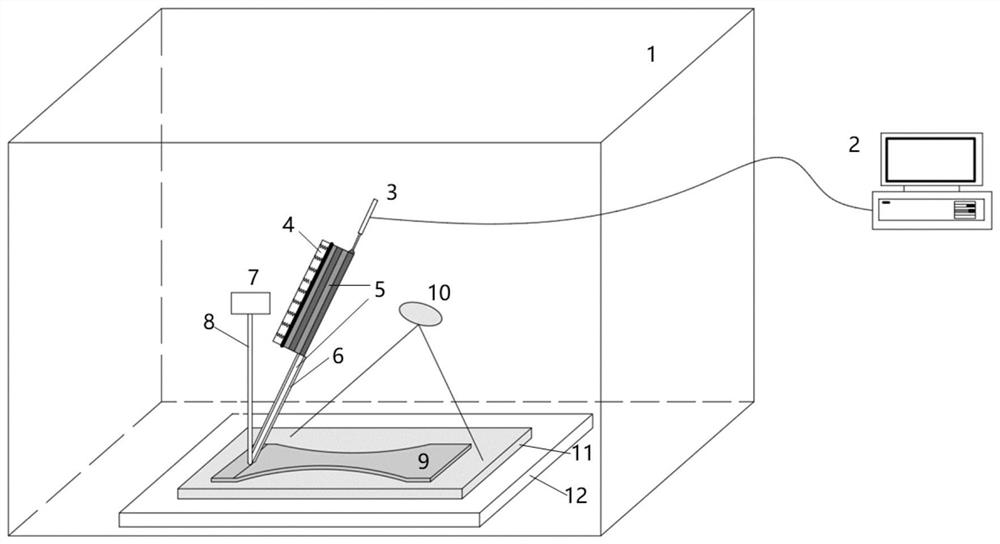3D printing system and method suitable for micro-gravity space environment
A 3D printing and space environment technology, applied in the field of 3D printing systems, can solve the problems affecting the mechanical properties and reliability of formed parts, the high forming ability of amorphous alloy glass, and the rapid heat dissipation of amorphous alloys, and achieve the distribution of components in the system. Compact and efficient, resistant to the influence of hot and cold circulation, and the effect of high adaptability to the space environment
- Summary
- Abstract
- Description
- Claims
- Application Information
AI Technical Summary
Problems solved by technology
Method used
Image
Examples
Embodiment Construction
[0033] In order to make the object, technical solution and advantages of the present invention clearer, the present invention will be further described in detail below in conjunction with the accompanying drawings and embodiments. It should be understood that the specific embodiments described here are only used to explain the present invention, not to limit the present invention. In addition, the technical features involved in the various embodiments of the present invention described below can be combined with each other as long as they do not constitute a conflict with each other.
[0034] Aiming at the limitation of the payload launched by the rocket and the available space of the spacecraft, the present invention proposes a space 3D printing system suitable for the spacecraft. Such as figure 1 Shown is a schematic diagram of a 3D printing system suitable for a microgravity space environment according to an embodiment of the present invention. The 3D printing system inclu...
PUM
| Property | Measurement | Unit |
|---|---|---|
| glass transition temperature | aaaaa | aaaaa |
| crystallization temperature | aaaaa | aaaaa |
| diameter | aaaaa | aaaaa |
Abstract
Description
Claims
Application Information
 Login to View More
Login to View More - R&D
- Intellectual Property
- Life Sciences
- Materials
- Tech Scout
- Unparalleled Data Quality
- Higher Quality Content
- 60% Fewer Hallucinations
Browse by: Latest US Patents, China's latest patents, Technical Efficacy Thesaurus, Application Domain, Technology Topic, Popular Technical Reports.
© 2025 PatSnap. All rights reserved.Legal|Privacy policy|Modern Slavery Act Transparency Statement|Sitemap|About US| Contact US: help@patsnap.com



